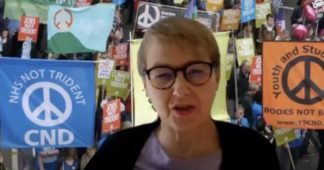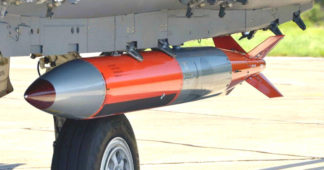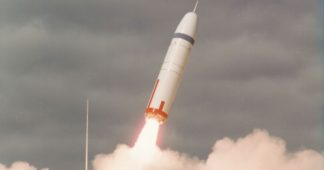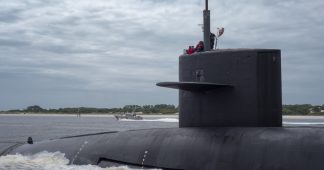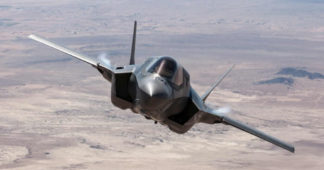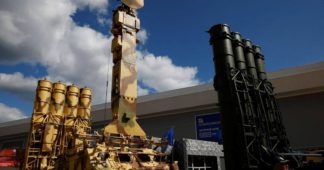By Dr Kate Hudson
Marc 28, 2022
When NATO leaders met last week they announced the deployment of an additional 40,000 troops on NATO’s eastern border, along with “significant air and naval assets.” They’re also “accelerating” plans for a new Strategic Concept document, due to be unveiled at the next NATO summit in Madrid in June.
The big question is what will that next Strategic Concept entail? Every Strategic Concept since 1999 has involved an expansion of NATO’s territorial and global reach, more money poured into weapons development and procurement, and more scenarios for intervention. Via these Strategic Concepts, NATO has undertaken its massive expansion into being a global force. At its summit last year, it expanded its orientation to the Asia-Pacific, specifically to confront China. In 2019, it even declared space to be an operational domain. It’s hard to see where NATO can go next, but its pledge to accelerate those trends is escalatory and will increase global security risks.
The statement also said: “We will also enhance our preparedness and readiness for chemical, biological, radiological and nuclear threats. We will take further decisions when we meet in Madrid.” Where will this take us in nuclear terms? There are already enough nuclear weapons in the world to destroy everything many times over.
Two nuclear armed super-powers – NATO (US, France and UK) and Russia have 12,000 nuclear weapons between them. This is an almost inconceivable scale – today’s bombs are vastly bigger than the Hiroshima bomb. That bomb exploded with the power of approximately 15 kilotons of TNT, killing at last 200,000 people. In today’s parlance, the Hiroshima bomb would be described as low yield. Many of the world’s larger warheads weigh in at 800 kilotons, with the UK’s arsenal each at 100 kt, or around 8 times the power of the Hiroshima bomb.
The US also has around 150 free fall nuclear bombs (dropped from planes) located across Europe. They are currently being modernised. They have a variable yield currently ranging from 0.3 KT to 170 KT and allow for both strategic and tactical use (that’s long and short range). In the event of a nuclear exchange over Ukraine, I think these are the most likely to be used, certainly to start off with. So a Russia/US nuclear war could be fought in Europe – our worst fear in the 1980s when millions mobilised across Europe against cruise and Pershing missiles. Maybe NATO is intending to locate more nuclear weapons in Europe?
Another increasing danger is presented by policies on nuclear use and this may be what NATO is going to further develop. Recent narratives and indeed practice, notably from former President Trump, refer to ‘usable’ nukes, or low yield nuclear weapons, ending the previous taboo on nuclear use, and the idea that the certainty of mutually assured destruction would prevent them being fired. There’s a lot of talk now of tactical nuclear weapons or battlefield nukes, as if they are somehow not very dangerous; this is irresponsible and wrong. Not only would they do massive unrestricted damage, but would be highly likely to lead to escalation to larger nuclear weapons use.
Also, scenarios in which nuclear could be used have been extended, including by Britain. That was announced in its Integrated Review last year, at the same time as the government announced a big increase in the UK’s nuclear arsenal.
As the invasion began, on 24 February, around 1,000 Russian nuclear weapons – and a similar number of US, British and French nuclear forces assigned to NATO – were already on ‘prompt-launch’ (high-alert) status – this is the normal situation. Most high-alert missiles are armed with strategic nuclear weapons with yields of at least 100 kilotons. They can be launched in 15 minutes and the nominal flight time of Intercontinental Ballistic Missiles carrying these weapons, travelling between the U.S. and Russia, is around 30 minutes.
On 27 February, Putin publicly announced that he had put Russia’s nuclear weapons on ‘special alert’. It’s not clear what this means, given that so many nuclear weapons on both sides of the conflict are already held on prompt-launch high alert.
Knowing the devastation that is caused by nuclear weapons from the horrific experience of Hiroshima and Nagasaki in 1945, not only the blast but the impact of radiation and the cancers, sickness and birth deformities that follow, it is essential that nuclear weapons are never used. It would be an existential catastrophe.
So what is the possibility of the Ukraine war turning nuclear? If the war expands into a direct conflict between NATO and Russia then it becomes a likelihood rather than a possibility. A no-fly Zone is the most rapid route to nuclear war. Breach of a NATO-imposed no-fly zone over Ukraine would lead to a direct Russia/NATO war. As one of our peace activist friends from Ukraine has said: “we believe this brutal invasion should be stopped, but we strongly oppose reckless demands to close the sky.”
CND – along with the rest of the international peace movement – has long argued for a new common security framework in Europe, and not massively increasing militarisation. We will be strongly making the case for this at the Madrid Peace Summit which runs alongside the NATO summit in Madrid in June.
The war has already altered the political balance in Europe and is accelerating its militarisation; this will have a profoundly negative impact on our societies, engendering a culture of violence and nationalism. For years there had been talk of the increasing militarisation of the EU, encouraged by the US, basically to input more resources into NATO; there had been little progress, but that has now changed. Germany for example, has undertaken a huge about-turn towards war and militarism. So more and more of the people’s money will be squandered on weapons and war, instead of on health, jobs and education.
It has often been said that NATO is the means by which the US makes Europe pay for its wars and its attempts at global military hegemony. That is more so the case than ever, and it brings with it ever greater dangers of nuclear annihilation.
Please support our work against nuclear weapons and war; the UN Treaty on the Prohibition of Nuclear Weapons is an important step forward – this is a move to global abolition of nukes led by the global south – please get active to support it. And if you can, please join us for the Peace Summit in Madrid in June: the demand for the abolition of NATO and nuclear weapons has to be at the heart of our work.
We remind our readers that publication of articles on our site does not mean that we agree with what is written. Our policy is to publish anything which we consider of interest, so as to assist our readers in forming their opinions. Sometimes we even publish articles with which we totally disagree, since we believe it is important for our readers to be informed on as wide a spectrum of views as possible.
